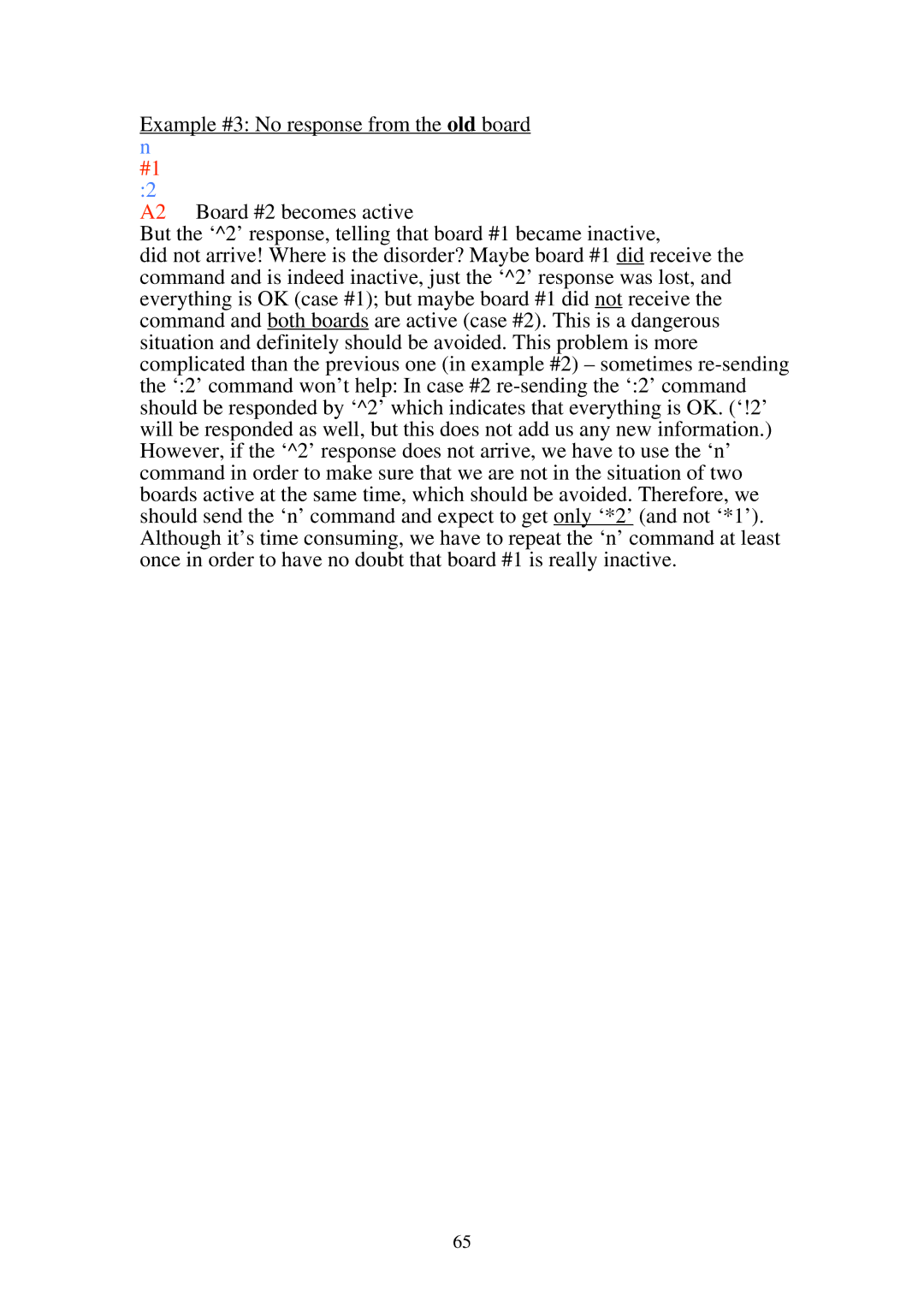
Example #3: No response from the old board n
#1
:2
A2 Board #2 becomes active
But the ‘^2’ response, telling that board #1 became inactive,
did not arrive! Where is the disorder? Maybe board #1 did receive the command and is indeed inactive, just the ‘^2’ response was lost, and everything is OK (case #1); but maybe board #1 did not receive the command and both boards are active (case #2). This is a dangerous situation and definitely should be avoided. This problem is more complicated than the previous one (in example #2) – sometimes re-sending the ‘:2’ command won’t help: In case #2 re-sending the ‘:2’ command should be responded by ‘^2’ which indicates that everything is OK. (‘!2’ will be responded as well, but this does not add us any new information.) However, if the ‘^2’ response does not arrive, we have to use the ‘n’ command in order to make sure that we are not in the situation of two boards active at the same time, which should be avoided. Therefore, we should send the ‘n’ command and expect to get only ‘*2’ (and not ‘*1’). Although it’s time consuming, we have to repeat the ‘n’ command at least once in order to have no doubt that board #1 is really inactive.

